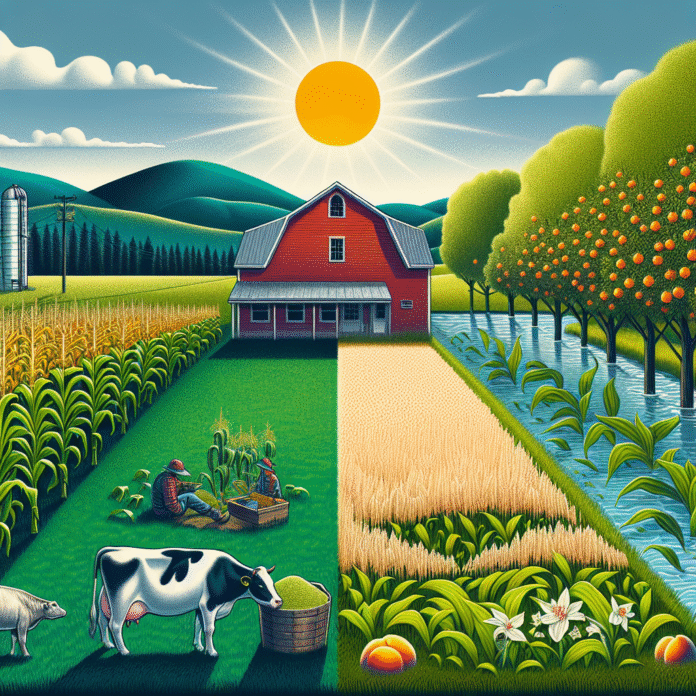Climate Change Transforms Vermont Agriculture with New Crops
The Unexpected Transformations of Vermont Agriculture Due to Climate Change
As the effects of climate change become increasingly pronounced, Vermont’s agricultural landscape is undergoing remarkable transformations. Farmers in the region are adapting to rising temperatures and shifting weather patterns by exploring new crops that were once considered unsuitable for the state’s climate. Among these surprising developments are the emergence of rice paddies, the cultivation of peaches, and even the production of saffron.
Emergence of Rice Paddies
Traditionally known for its dairy farms and maple sugar production, Vermont is now seeing the introduction of rice cultivation. With warmer temperatures and changes in rainfall patterns, certain areas of the state have become suitable for growing varieties of rice that thrive in wet conditions. This shift not only diversifies local agriculture but also promotes sustainable farming practices, as rice paddies can help with water management and ecosystem health.
Peach Production Gains Traction
In recent years, Vermont’s climate has become more conducive to growing peaches, a fruit that historically struggled in the region’s cooler temperatures. Farmers are now planting hardier peach varieties that can withstand the state’s unique climate. The successful cultivation of peaches not only adds to the diversity of local fruit production but also offers new economic opportunities for farmers, who can tap into the growing demand for locally sourced produce.
Exploring Saffron Cultivation
Another exciting development is the cultivation of saffron, the world’s most expensive spice, in Vermont. With its preference for well-drained soil and a Mediterranean-like climate, saffron has found a niche in certain areas of the state. Farmers are experimenting with this high-value crop, which not only diversifies their offerings but also presents a lucrative opportunity in the specialty spice market.
Challenges and Opportunities
While these shifts present exciting opportunities for Vermont farmers, they also come with challenges. Farmers must navigate the intricacies of growing new crops, including pest management and market access. Additionally, the unpredictability of climate change means that farmers need to be agile and adaptable, employing innovative practices to ensure the sustainability of their operations.
Community and Economic Impact
The diversification of crops in Vermont is not just a boon for individual farmers; it also has broader implications for local communities and the state’s economy. By introducing new crops, farmers can foster local food systems, strengthen community ties, and contribute to a more resilient agricultural economy. Furthermore, as consumers become increasingly interested in supporting local agriculture, these unique offerings can attract tourism and bolster agritourism initiatives.
A Vision for the Future
As climate change continues to reshape Vermont’s agricultural landscape, farmers are at the forefront of innovation and adaptation. By embracing new crops like rice, peaches, and saffron, they are not only responding to the challenges posed by a changing climate but also paving the way for a dynamic and sustainable future for Vermont agriculture. Through collaboration, education, and a commitment to sustainability, the state’s farmers are poised to thrive in a warming world.


